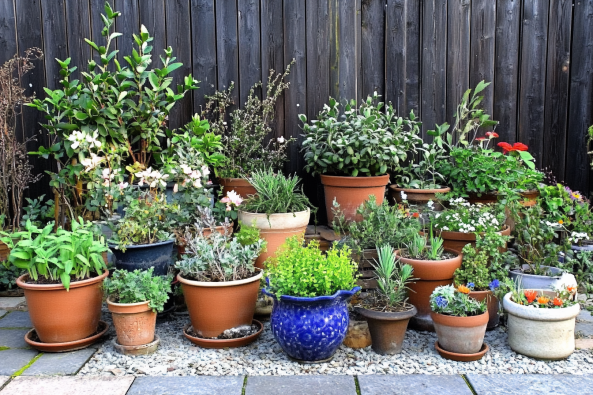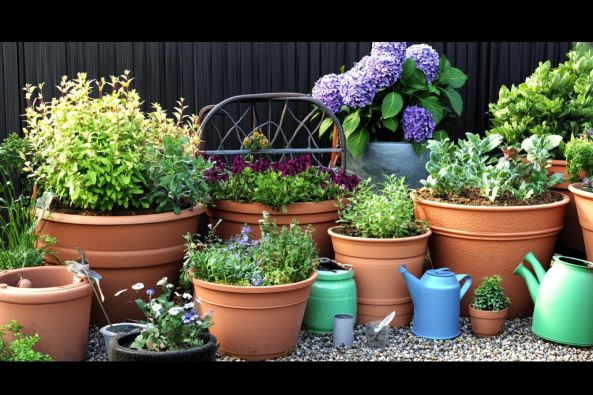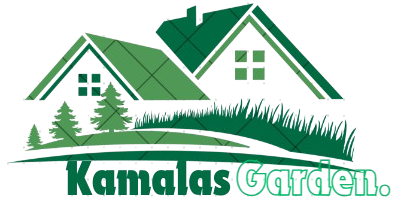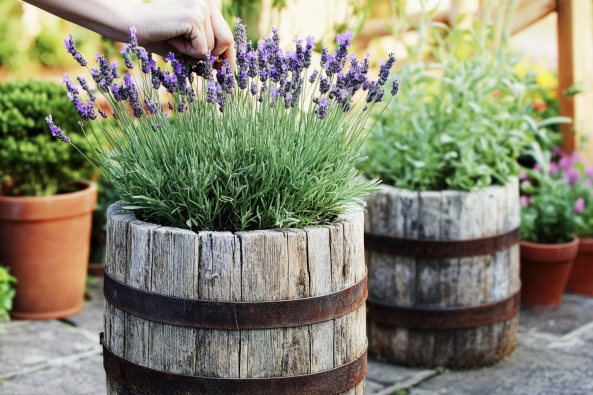What is Container Gardening?
Container gardening is a versatile gardening method where plants are grown in pots, planters, or other containers instead of being planted directly in the ground. This technique allows gardeners to cultivate flowers, vegetables, and herbs in limited spaces like balconies, patios, and small yards.
Why It’s Great for Beginners and Small Spaces
- Perfect for Apartments & Small Yards – You can grow a variety of plants even if you don’t have a traditional garden.
- Easier Maintenance – Less weeding and fewer pests compared to traditional gardening.
- Better Soil Control – Customize your potting mix for optimal plant health.
Benefits of Container Gardening
Space-Saving Solution for Apartments & Small Yards
- Allows urban dwellers to enjoy gardening without needing a large outdoor area.
- Can be done on balconies, terraces, rooftops, or indoors.
Easier Maintenance and Control Over Soil Quality
- No need to deal with poor native soil.
- Less risk of soil-borne diseases and pests.
Ideal for Growing Vegetables, Flowers, and Herbs
- Vegetables – Tomatoes, peppers, lettuce, and carrots thrive in containers.
- Flowers – Petunias, marigolds, and geraniums add beauty.
- Herbs – Basil, mint, and rosemary grow well in small pots.
How to Get Started with Container Gardening

1. Choosing the Right Containers
The type of container you choose can impact your plants’ health and growth.
Plastic vs. Ceramic vs. Terracotta vs. Fabric Grow Bags
- Plastic Containers – Lightweight, affordable, and retain moisture well.
- Ceramic & Terracotta Pots – Aesthetic but heavier and may dry out quickly.
- Fabric Grow Bags – Excellent for root aeration and drainage.
Best Size & Shape for Different Plants
- Small pots (6-10 inches) – Best for herbs like basil and thyme.
- Medium containers (12-16 inches) – Suitable for flowers and small veggies.
- Large containers (18+ inches) – Ideal for deep-rooted plants like tomatoes and peppers.
2. Selecting the Best Potting Mix
The right soil mix is crucial for container gardening success.
Why Regular Garden Soil Isn’t Ideal for Containers
- Becomes compacted and hinders root growth.
- Poor drainage can lead to root rot.
How to Create a Well-Draining, Nutrient-Rich Mix
- Mix potting soil, compost, and perlite or vermiculite.
- Avoid heavy clay-based soils that retain excess moisture.
3. Drainage is Key
Proper drainage prevents waterlogging and root rot.
The Importance of Proper Drainage Holes
- Ensure containers have holes at the bottom to allow excess water to escape.
Why Adding Rocks to the Bottom is a Mistake
- Contrary to popular belief, rocks don’t improve drainage and can lead to water buildup at the roots.
4. Picking the Right Plants for Containers
Some plants thrive in containers better than others.
Best Vegetables, Herbs, and Flowers for Beginners
- Vegetables: Lettuce, radishes, peppers, cherry tomatoes.
- Herbs: Mint, basil, chives, rosemary.
- Flowers: Marigolds, petunias, pansies, begonias.
Combining Plants with Similar Water & Light Needs
- Sun-loving plants: Tomatoes, basil, lavender.
- Shade-tolerant plants: Ferns, begonias, hostas.
Essential Tips for Successful Container Gardening

5. Understanding Sunlight & Placement
Full Sun vs. Partial Shade Plants
- Full Sun Plants: Require 6+ hours of direct sunlight.
- Partial Shade Plants: Thrive with 3-6 hours of sunlight.
Positioning Your Containers for Optimal Growth
- Place sun-loving plants in south-facing spots.
- Use movable containers to adjust for seasonal changes.
6. Watering Properly
How Often to Water Container Plants
- Most plants need watering when the top inch of soil feels dry.
- Containers dry out faster than in-ground gardens.
Self-Watering Planters & Irrigation Hacks
- Self-watering pots help retain moisture.
- Use mulch to reduce evaporation and retain soil moisture.
7. Fertilizing Your Plants
Best Organic & Synthetic Fertilizers for Containers
- Organic Options: Compost tea, fish emulsion, worm castings.
- Synthetic Options: Slow-release granular fertilizers.
How Often to Feed Your Plants for Healthy Growth
- Feed every 2-4 weeks, depending on plant type.
8. Supporting Large or Vining Plants
Larger plants often need extra support.
Using Stakes, Cages, or Trellises for Stability
- Tomatoes – Use stakes or cages.
- Beans & Cucumbers – Grow vertically using trellises.
Seasonal Care & Maintenance
9. Keeping Plants Healthy Year-Round
Common Pests & Diseases in Container Gardening
- Aphids – Treat with neem oil or insecticidal soap.
- Powdery Mildew – Ensure proper air circulation.
When & How to Prune Potted Plants
- Remove dead leaves and stems to promote new growth.
- Prune herbs frequently to encourage bushier growth.
10. Winterizing Container Plants
Protecting Delicate Plants in Cold Climates
- Move sensitive plants indoors or into a greenhouse.
- Use insulating covers for plants that remain outside.
Overwintering Techniques for Perennials in Pots
- Reduce watering to prevent root rot.
- Apply mulch to protect roots from frost.
Common Mistakes to Avoid in Container Gardening
- Overcrowding plants in small containers.
- Using poor-quality soil that compacts too quickly.
- Ignoring drainage and causing waterlogging.
- Overwatering or underwatering, leading to root issues.
Final Thoughts: Start Your Container Garden Today!
Container gardening is a rewarding and flexible way to grow plants, whether you’re in an apartment, condo, or small backyard. With the right containers, soil, and plant choices, you can create a thriving mini garden anywhere.
Start today by choosing your first containers and plants, and enjoy the benefits of fresh herbs, veggies, and flowers right at home!
Related Posts You May Like
For more inspiration, check out this guide on container gardening.

